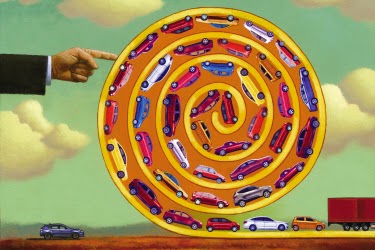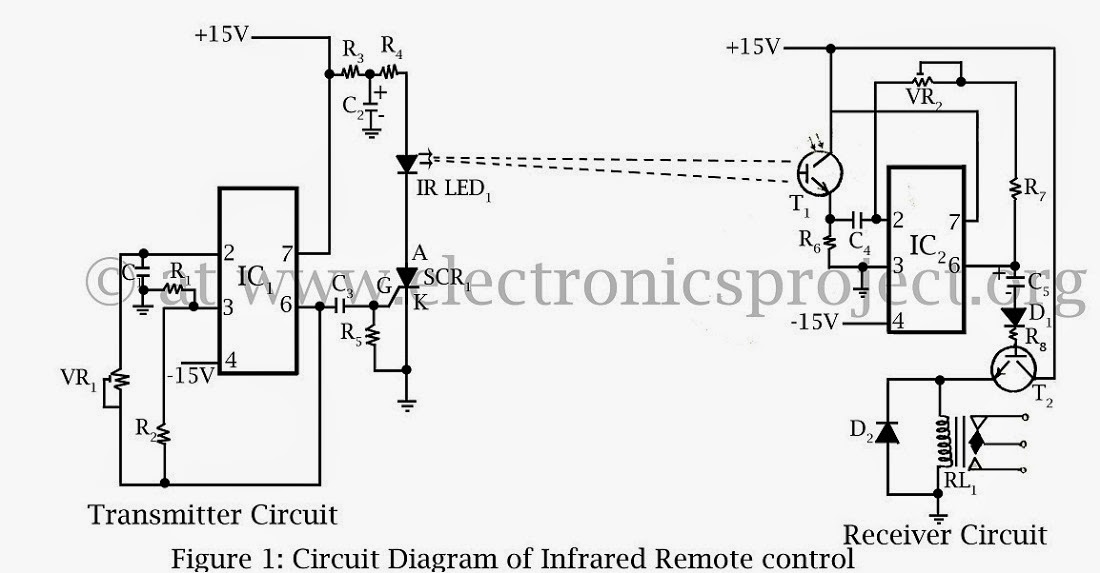It is unlikely to be of much comfort when you're next in a traffic jam to know there is a plethora of traffic monitoring and management technologies out there trying to detect the build up of traffic and help you on your way.
Not that the whole area of Intelligent Transport Systems (ITS) is at a crossroads. For a long time, inductive loops buried in tarmac were the only source of help, transmitting vehicle data to a public authority – and it is still used in many many places. A simple twisted coil of wire under the road detects whether large metal objects pass over the surface. Two inductive loops close together can help ascertain the speed of the vehicles.
More recently, public authorities have begun to recognise the virtues – and the drawbacks – of smarter, non intrusive technologies. For example, automatic number plate recognition (ANPR) systems are using ever more sophisticated control systems and more sensitive imaging technologies, radar based systems suggest it is sometimes better without sight, and applications using wireless communications technologies, notably Bluetooth and Wi-Fi, are being developed.
Savvy private sector operators and car manufacturers have also seen the opportunity. They are either buying or receiving from private users and fleet management operators live data from GPS enabled devices, mobile phone networks and roadside sensors, crunching the aggregated data and selling the results to end users (see box).
One technology that is currently gaining traction for measuring travel times along a predefined route is based on wireless – notably Bluetooth, often in combination with Wi-Fi.
The method is relatively simple. "We are seeing many more people using Bluetooth enabled devices, such as phones and headsets, and almost all vehicles now include a hands free kit," Lars Christensen, chief technology officer of Danish company Blip Systems told New Electronics. "Importantly, these (latter) are permanently in discovery mode."
These, and many GPS devices, have a Bluetooth Media Access Control (MAC) address that, when enabled, can be detected by the type of sensors developed by Blip Systems and others. The addresses are detected, then matched between sites to provide origin and destination data, as well as journey time.
"The decision whether to opt for a wireless based solution or the more traditional, but still very effective, ANPR technique can be a tough one for public authorities. Both have their pluses and minuses," commented Nick Hewitson, managing director of Smart CCTV, a systems integrator specialising in installing both types of traffic monitoring system.
An important consideration for any authority is whether the installation is to be used simply for monitoring traffic flows and easing congestion or for enforcement purposes. A Bluetooth based solution cannot be used for the latter, so the authorities would choose an ANPR system and spread the costs across different functions.
Smart CCTV recently installed a much needed monitoring and management system in traffic-tormented Portsmouth, one of the worst cities in England for congestion. It specified a system from Blip, deploying BlipTrack sensors on the 12 most congested cross city routes.
Blip Systems, a management buy out in 2003 from Ericsson's Danish Bluetooth development group, focused initially on developing sensors and hubs for mobile marketing solutions, touchscreen kiosks and information booths. But it shifted its efforts to focus on the opportunities of vehicle tracking. Christensen added, somewhat ruefully, that the group was almost a decade ahead of its time and suggested Apple, with its marketing clout and recently revealed iBeacon technology, will dominate that space in the near term. Blip, after all, stands for Bluetooth Local Information Point.
Christensen conceded that not all vehicles will have devices that emit a Bluetooth or Wi-Fi signal and that some may not have Bluetooth enabled. "But the detection rate – typically 25% – is still sufficient to give meaningful data travel time and, with a combined Bluetooth-Wi-Fi sensor, we are seeing this increased to about 40%."
What is clear in Christensen's mind is that 'cameras are significantly more expensive than our sensors, both to make and install'. "An ANPR system will also need a camera over each lane, thus multiple cameras over each site, and a set up that is significantly more costly to maintain. It can also be affected by snow, fog and the build up of dirt on the cameras.
"And there are absolutely no privacy issues. The time-travel data we collect is completely anonymous at all times."
The MAC address identifier within the Bluetooth protocol serves as an encrypted one-way hash code and contains no personal information, so the data leaving the sensor is untraceable to the individual device.
Only the hash codes are transmitted to the server – 'and the encryption keys are changed every day', according to Christensen.
The BlipTrack sensor generally runs off a 5W supply – a battery, solar panel or combination of the two. It also incorporates a GPS receiver, allowing a time and position stamp to be incorporated in the hash code. The data collected is transmitted via cellular networks or Ethernet links to a data centre where aggregated journey time data is analysed.
Its proponents point out that wireless sensors and antennae provide a larger detection zone compared with ANPR cameras. This increases the probability of detecting a Bluetooth enabled device in a fast moving vehicle. The downside is the probability of multiple detections of a single device increases. This could result in location ambiguity and reduced accuracy of travel time estimates.
Christensen was asked how a Bluetooth based monitoring system could distinguish between a vehicle passing a sensor along a route and a pedestrian, cyclist or a bus carrying passengers, or even a car changing direction. He said, without going into detail, that Blip's technology incorporates a special filter engine that ensures only data from vehicles is captured, not any 'outliers'. In addition, to prevent the recorded travel times from these devices distorting the actual travel time calculation, Blip's software uses a moving average based algorithm capable of excluding readings far outside the medium to reveal the actual average speed of traffic.
Christensen notes that several trials, and tens of installed systems in Europe, the US and Asia, have proven the accuracy and efficiency of the approach. "It is becoming a really competitive area, not just between wireless based and ANPR type systems, but also between others supplying Bluetooth based solutions."
These include Spanish company Libelium; UK group TDC Systems (recently acquired by Q-Free of Norway, with its HI-TRAC BLUE); Australian start up IntelliDesign; US company TrafficCast, with its BlueTOAD (Bluetooth Travel-time Origination and Destination) detectors; and a system developed in the US by Texas A&M Transportation Institute, or TTI, dubbed AWAM (for Anonymous Wireless Address Matching). This latter system is about to be commercialised following successful implementations in Texas. TTI said it anticipates widespread use of its technology on the back of new regulations in the US that require highway agencies to monitor the performance of their road networks.
Neil Hoose, founder of intelligent transport consultancy Bittern and visiting Professor at Imperial College London's Centre for Transport Studies (which has an active group researching Bluetooth type systems for travel time estimation and management) concurs that wireless based approaches can be significantly lower cost to plan, install and maintain. "Perhaps by a factor of five over ANPR," he said. "They can also give local authorities a fast fix for problems." But he cautions that Bluetooth is a fast moving technology. "What would happen if the world suddenly took against it and everyone deactivated the technology on their devices? It would render such networks ineffective." He suggests there will always be a need for the less fashionable, and certainly more unpopular (with drivers ANPR installations.
Proponents of ANPR, meanwhile, stress the significantly higher hit rate for the camera based option. "Typically, the rate for an ANPR set up is 95% while, with Bluetooth, you could be looking at less than 10%," said Peter Billington, head of Telematics Technology and chair of the ANPR working group within the UK's Urban Traffic Management Control operation. "But in a high volume scenario, that is still a good enough sample. For the Highways Agency, resilience is important, but if you are talking simply journey time information, lower hit rates are acceptable."
Billington stresses that ANPR camera capability is improving dramatically, in line with advances in image sensors, so a greater width of road can be covered with fewer cameras.
Telematics Tech works closely with CA Traffic – according to Billington, the fastest growing provider of ANPR systems in the UK. "Its latest cameras, the Evo-X, for instance, are more versatile, with a video and CCTV capabilities, the most advanced communications options (including 4G) and, importantly, the most powerful IR illuminator available." He adds the processing power of the latest camera – using a bank of DSPs, an ARM8 core, an Intel Atom processor and FPGAs from Altera – 'is as about sophisticated as you can get'.
Private enterprise spots the opportunities
The solutions to journey time and traffic management mentioned in the main article rely on fiscally challenged local or national governments investing in the systems. Not surprisingly, private corporations have spotted the opportunity and are offering solutions.
Some of the leaders include INRIX, Waze (now part of Google) and Cellint. Each has a slightly different business model, but all basically capture dynamically updated traffic information from vehicle users, third parties, logistics companies via GPS devices and mobile phone network providers (referred to in the sector as 'probe data' or 'crowd sourced data'). This is processed in real time and combined with a database of variables, such as weather conditions and known construction schedules, which can then be used by drivers to negotiate traffic problems.
All are keen to stress their services do not encroach on privacy and that the information should be considered as complementary. Their services are also unlikely, at least in the near future, to replace fixed infrastructure for traffic management. Indeed, INRIX stresses it works closely with the UK Highways Agency, while recently acquired ITIS is the primary provider of live traffic information to UK broadcasters, such as the BBC and most commercial radio stations.
"Perhaps the major difference between the approaches is that probe data is far more granular (fast and accurate) in the way it can detect traffic and the speed at which it can warn of problems ahead," Danny Woolard, INRIX' vp for business development in EMEA, told New Electronics.
"Looking back about ten years, public authorities were sceptical about the value of data obtained from GPS devices – and probe data in general. Today, most recognise that it comes down to far more granularity, accuracy and speed at which incidents can be detected and corrected."
Data from the 41 countries in which INRIX is active is impressive: for example, 150 million drivers reached on an average day; 2billion GPS data ports processed daily; 6m km of roads accessed; and millions of roadside sensors monitored each hour.
Having all this data is one thing: crunching it and combining it with historical data to come up with advice that can be easily accessed by real time sat nav systems or by INRIX' smartphone app is where INRIX scores, says Woolard. "We have licensing deals with more automotive manufacturers – including BMW, Ford, Toyota and Audi than any other player in this field – as well as licensing deals with Garmin. And we don't just focus on the consumer market."
That last comment speaks to the fact that Waze relies predominantly on input from users of the Waze application and on a limited set of roads. For all that, there are millions of users of Waze, which is linked in to Google Maps and said to be very easy to use.
















